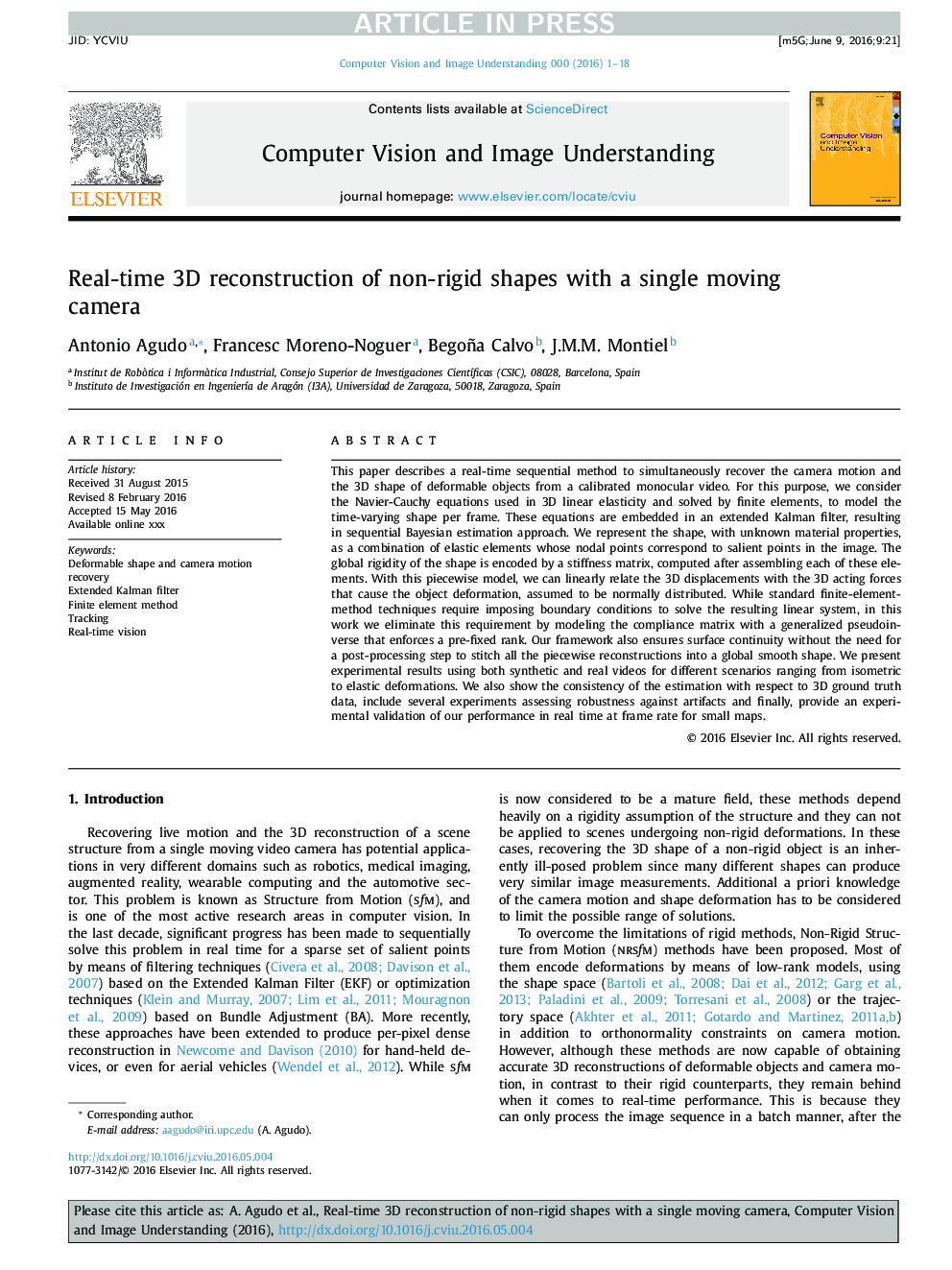| Article ID | Journal | Published Year | Pages | File Type |
|---|---|---|---|---|
| 4968869 | Computer Vision and Image Understanding | 2016 | 18 Pages |
Abstract
This paper describes a real-time sequential method to simultaneously recover the camera motion and the 3D shape of deformable objects from a calibrated monocular video. For this purpose, we consider the Navier-Cauchy equations used in 3D linear elasticity and solved by finite elements, to model the time-varying shape per frame. These equations are embedded in an extended Kalman filter, resulting in sequential Bayesian estimation approach. We represent the shape, with unknown material properties, as a combination of elastic elements whose nodal points correspond to salient points in the image. The global rigidity of the shape is encoded by a stiffness matrix, computed after assembling each of these elements. With this piecewise model, we can linearly relate the 3D displacements with the 3D acting forces that cause the object deformation, assumed to be normally distributed. While standard finite-element-method techniques require imposing boundary conditions to solve the resulting linear system, in this work we eliminate this requirement by modeling the compliance matrix with a generalized pseudoinverse that enforces a pre-fixed rank. Our framework also ensures surface continuity without the need for a post-processing step to stitch all the piecewise reconstructions into a global smooth shape. We present experimental results using both synthetic and real videos for different scenarios ranging from isometric to elastic deformations. We also show the consistency of the estimation with respect to 3D ground truth data, include several experiments assessing robustness against artifacts and finally, provide an experimental validation of our performance in real time at frame rate for small maps.
Related Topics
Physical Sciences and Engineering
Computer Science
Computer Vision and Pattern Recognition
Authors
Antonio Agudo, Francesc Moreno-Noguer, Begoña Calvo, J.M.M. Montiel,
